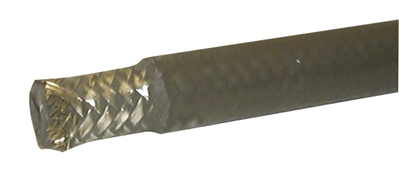Hydraulic Hose Failure Reasons and Common Causes
Hydraulic hose failure can occur at any time when operating a hydraulic system. Some hose failures can be prevented with the proper maintenance to identify potential problems. In other cases, regardless of how well you conduct maintenance, you can do nothing to prevent the hose from failing.
.png?width=399&height=321) Some of the more common hydraulic hose failure reasons and how to prevent them include:
Some of the more common hydraulic hose failure reasons and how to prevent them include:
Hose Hardening from Heat
If hoses are exposed to high temperatures when in operation, over time they will start to harden and lose their flexibility due to heat ageing. The rubber liner inside the hoses gradually degrades until the hose becomes stiff enough to break. External heat and sunlight will cause the same sort of damage to the cover. If this is a potential problem, it is worth finding ways to protect the outside of the hose.
When conducting maintenance, check the hoses to see if they feel stiff. If you hear cracking sounds when you bend them, it means the interior of the hose is hardening. To prevent a failure, replace it. You can also use heat guards to shield the hoses in extremely hot areas of the system to slow the hardening of the cover.
Hose Abrasion
Hoses move to a certain extent by expanding and contracting based on pressure and hydraulic fluid flow rates passing through them. If the hoses rub against one another or against metal parts, this causes abrasion. Eventually, the abrasion will wear away the outer layers of the hose until it breaks.
To reduce hose abrasion, make sure they are not touching each other or metal parts. You can add spacers and protective covers in areas where abrasion is an issue.
Incompatible Hydraulic Fluid
There are differences in the hydraulic fluids used in hydraulic systems. If you use an incompatible hose or incompatible fluid, the hose will begin to deteriorate inside until it breaks.
To prevent this problem, verify the hoses you use are compatible with the fluid. If you change fluid for any reason, please verify that the new fluid is compatible with the existing hoses.
Hose Tube Erosion
There are different sizes of hoses designed to accommodate different pressures and flows of hydraulic fluid. When the hose is too small for the flow being transmitted it will, in some cases, be unable to handle the pressure and flow. In order to prevent hose failure, take the time to review the bore size of the hoses you need based on the system pressure and fluid flow rates.
Incorrect Hose Assembly
Improper assembly of the hose can lead to leaks and eventual hose failure. Furthermore, when cutting hoses and installing fittings, ends should be cut square, cleaned of debris, and the fitting fully engaged with the end of the hose.
Hose Radius Too Tight
Hydraulic hoses have a minimum bend radius to prevent kinks. Kinks pinch off the amount of fluid that flows through the hose and leads to failures. Kinks can also cause excess pressure to build up, causing the hose to burst. Tight hose bends stretch the hose liners, reinforcing wires, and covers on one side and compress them on the inside of the radius, causing excessive tension within the hose structure and reducing its performance capability.
To prevent exceeding the minimum bend radius, make the hose long enough to avoid any tight bends and use suitable hose end fittings, such as 45- or 90-degree bends, to ensure that the hose is never under any sort of tension when not under pressure. Using the correct end fittings can also provide the hose with additional support.
Normal Hose Wear and Tear

Just like other hydraulic parts and components, hoses eventually fail from normal use once they reach the end of their useful life. Preventing this problem is as easy as keeping up with a regular maintenance and tracking regime.
Poor Hose Routing
Another reason for hydraulic hose failure is poor routing. Routing the hose through high-heat areas, where abrasion could be an issue, or where it has to be bent beyond the minimum bend radius can all shorten the service life of the hose.
Take the time to review routing and ensure hoses are run in areas that do not pose potential problems. Use protective sleeves or other outer covers to protect the hoses in high heat or areas exposed to sunlight when there is no alternative route for the hoses.
These are some of the top hydraulic hose failure reasons. Make sure to perform maintenance regularly to help identify potential problems before they occur. For new
hydraulic hoses, hose fittings, and other hydraulic parts and components, please feel free to explore our inventory online or contact White House Products, Ltd. at +44 (0) 1475 742500 today!
Back to blog posts